Remove the air duct (A).
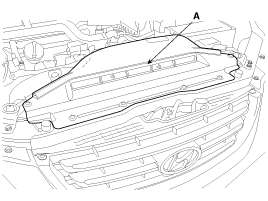
Make sure jacks and safety stands are placed properly.
Make sure the vehicle will not roll off stands and fall while you are working under it.
Use fender covers to avoid damaging painted surface.
Plug the wiring connectors carefully while holding the connector portion to avoid damage.
Mark all wiring and hoses to avoid misconnection.
Also, be sure that they do not contact other wiring or hoses or interfere with other parts.
Remove the engine cover.
Remove the air duct (A).

Disconnect the battery negative terminal first, then the positive terminal. Remove the battery.
Recover the refrigerant and remove the high & low pressure pipe.
(Refer to Air conditioning system in HA Group.)
Loosen the drain plug, and then drain the coolant.
Remove the radiator cap to speed draining.
Remove the air cleaner assembly.
Disconnect the Air Flow Sensor (AFS) connector (A).
Disconnect the breather hose (B).
Disconnect the ECM connectors and then remove the air cleaner assembly (C).
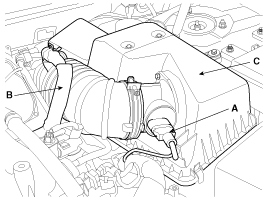
Remove the front wheel & tire.
Remove the under cover (A).
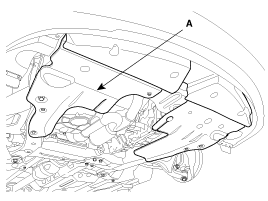
Remove the radiator upper and lower hose (A).

Disconnect the fuel hose (A).
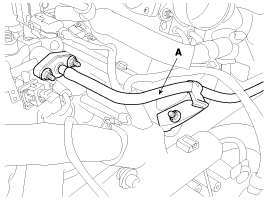
Remove the engine wire harness connectors and wire harness clamps from engine.
Disconnect the knock sensor connector (A, B), the RH ignition coil connector (C) and the VIS connector (D).
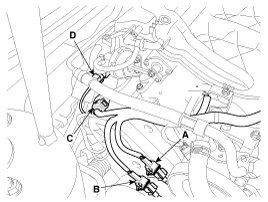
Disconnect the LH injector connectors (A, B, C), the LH ignition coil connector (D) and then remove the wiring harness protector (F).
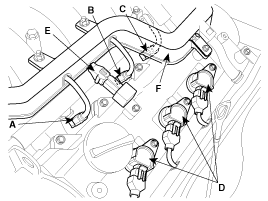
Disconnect the MAP sensor connector (A), the ETC connector (B) and the PCSV connector (C).
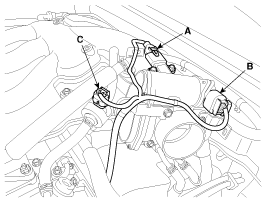
Disconnect the RH injector harness connector (A).
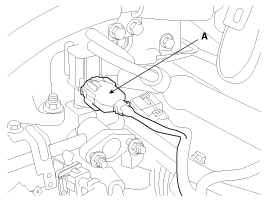
Disconnect the RH CMP sensor connector (A).
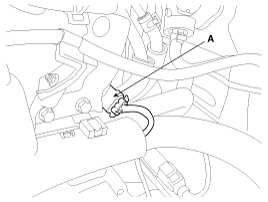
Disconnect the LH OCV connector (A), OTS connector (B) and the RH OCV connector (C).
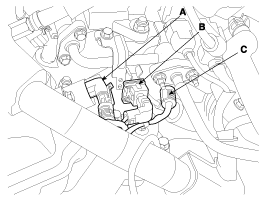
Disconnect the LH CMPS connector (A) and the WTS connector (B).
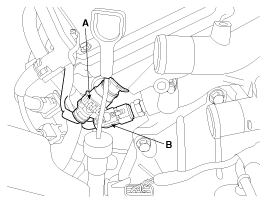
Disconnect the LH front oxygen sensor connector (A), the LH rear oxygen sensor connector (B) and the CKPS connector (C).
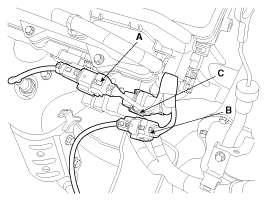
Disconnect the alternator connector (A) and A/C compressor switch connector (B).
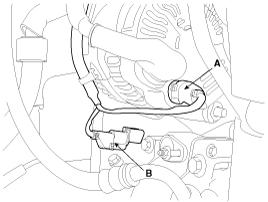
Disconnect the RH front, rear oxygen sensor connector (A).
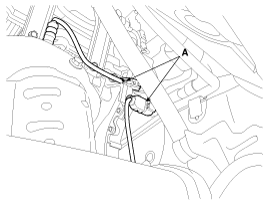
Disconnect the brake booster vacuum hose (A).
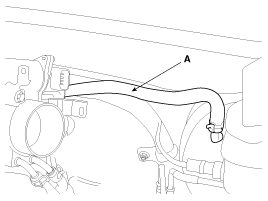
Disconnect the heater hoses (A).
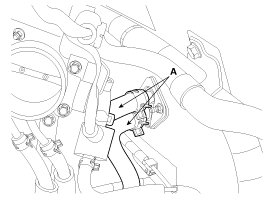
Remove the automatic transaxle fluid (ATF) hose. (Refer to AT group)
Disconnect the transaxle control cable. (Refer to Transaxle control system in MT or AT Group).
Disconnect the Electronic Power Steering (EPS) sensor connector (A).
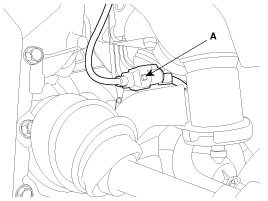
Remove the power steering hose (A). (Refer to Power steering Pump in SS Group)
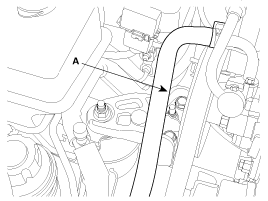
Disconnect the stabilizer bar link and remove the mounting bolts from the lower arm and the front axles.
(Refer to Front suspension in SS Group).
Remove the lower arm mounting bolt. (Refer to Front suspension in SS Group).
Remove the split pin and castle nut and then disconnect the tie rod end (A) with the knuckle. (Refer to ST group)
Disconnect the driveshaft from the axle hub. (Refer to DS group)
Remove steering u-joint mounting bolt (A). (Refer to ST group)
Remove power steering return hose (A) and drain power steering fluid.
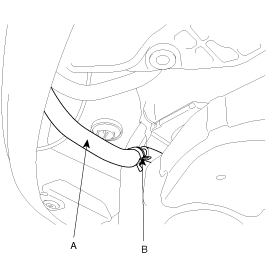
Remove the front muffler (A).
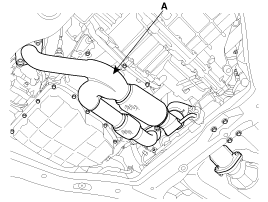
Support the sub frame (A) with a floor jack then remove the stay (B) and sub frame mounting bolts.

Remove the engine mounting bracket (A).
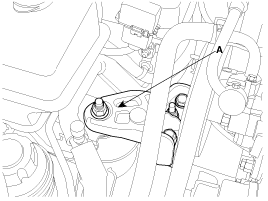
Remove the transaxle mounting bracket (A).
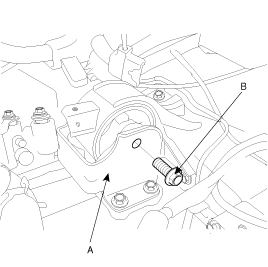
Lift up the vehicle and remove the engine and transaxle assembly from the bottom of vehicle.
When removing the engine and transaxle assembly, be careful not to damage any surrounding parts or body components.
Installation is in the reverse order of removal.
Perform the following:
Adjust the shift cable.
Adjust the throttle cable.
Refill engine with engine oil.
Refill transaxle with fluid.
Clean the battery posts and cable terminals with sandpaper assemble them, and then apply grease to prevent corrosion.
Inspect for fuel leakage.
After assembling the fuel line, turn on the ignition switch (do not operate the starter) so that the fuel pump runs for approximately two seconds and fuel line pressurizes.
Repeat this operation two or three times, then check for fuel leakage at any point in the fuel lines.
Refill radiator with engine coolant.
Bleed air from the cooling system.
Start engine and let it run until it warms up. (Until the radiator fan operates 3 or 4 times.)
Turn Off the engine. Check the level in the radiator, add coolant if needed. This will allow trapped air to be removed from the cooling system.
Put radiator cap on tightly, then run the engine again and check for leaks.